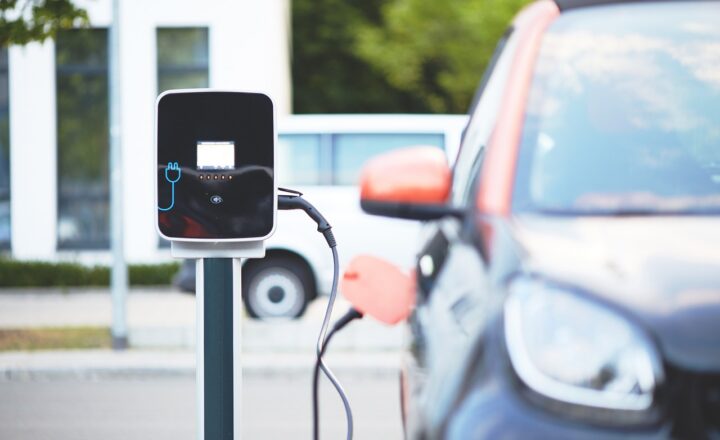How Electric Vehicle Charging Stations Are Expanding Worldwide
November 12, 2024

The rise of electric vehicles (EVs) marks a significant shift in the automotive industry, and a critical aspect of this transition is the expansion of electric vehicle charging stations. As governments and companies pivot towards more sustainable transportation solutions, the infrastructure for charging needs to keep pace. In this article, we’ll explore how charging stations are expanding worldwide, the technologies involved, challenges, and the future of EV charging.
1. Understanding the Need for Charging Stations
The growing demand for electric vehicles necessitates a robust network of charging stations. With sales of EVs reaching record levels, consumers are increasingly concerned about the availability of charging options. According to a report by the International Energy Agency (IEA), the number of electric cars on the road surpassed 10 million in 2020, and this number continues to grow exponentially.
Some key reasons driving the need for more charging stations include:
- Range Anxiety: Potential EV owners often worry about running out of battery power during their travels—a phenomenon known as range anxiety. Ample charging stations can alleviate this concern.
- Convenience: As more people adopt electric vehicles, the availability of charging stations near residential areas, highways, and workplaces becomes crucial.
- Government Initiatives: Many governments are implementing policies and incentives to encourage EV adoption, which includes funding for the installation of charging infrastructure.
2. Types of Electric Vehicle Charging Stations
Electric vehicle charging stations can be broadly classified into three levels based on the charging speed:
- Level 1 Charging: These are standard household outlets and provide the slowest charge, with approximately 4-5 miles of range added per hour. Level 1 chargers are suitable for overnight charging at home but are typically insufficient for public spaces.
- Level 2 Charging: These stations are commonly found in public places like shopping malls, office buildings, and parking lots. They can add about 10-25 miles of range per hour of charging. Level 2 stations require a 240-volt outlet and are ideal for shorter stays.
- DC Fast Charging: This type of charging station provides rapid charging, adding approximately 60-80 miles of range in just 20 minutes. DC fast chargers are typically located along highways to support long-distance travel.
The diversity in charging station types allows for flexibility in user experience, accommodating both daily commuters and long-distance travelers.
3. Global Expansion of Charging Infrastructure
Countries around the world are racing to expand their EV charging infrastructure. Let’s explore some notable examples:
- United States: As of 2021, there are over 100,000 publicly available charging stations across the country, and the Biden administration aims to accelerate this effort with a $7.5 billion investment to build a national network of fast chargers.
- China: China leads in EV adoption with over 1 million charging points. The government is heavily investing in charging infrastructure to support its growing fleet of electric vehicles.
- Europe: Europe is expected to have around 1 million public charging points by 2025. Countries like Norway, the Netherlands, and Germany are leading the way through ambitious policies and incentives.
Governments, private enterprises, and electric utilities are making concerted efforts to install and upgrade charging stations, responding to the rising demand for electric vehicles.
4. The Role of Technology in Charging Stations
Technological advancements play a critical role in expanding electric vehicle charging stations. Some key innovations include:
- Smart Charging: Smart charging technologies allow charging stations to communicate with electric vehicles and the grid, optimizing charging times and energy usage. This feature can help lower costs for EV owners while balancing the demand on the electric grid.
- Mobile Apps: Numerous mobile applications offer real-time data on charging station locations, availability, and charging speeds. This not only aids EV owners in finding convenient charging options but also eases range anxiety.
- Wireless Charging: Although still in its infancy, wireless charging technology is emerging. It allows EVs to charge without physical cables, improving convenience for users.
These innovations not only enhance user experience but also contribute to a greener and more efficient electric vehicle ecosystem.
5. Challenges Facing Charging Infrastructure Expansion
Despite the rapid growth of electric vehicle charging stations, several challenges remain:
- Funding and Investment: Building charging infrastructure can be expensive. Securing funding for widespread deployment remains a challenge, particularly in rural areas where usage may be lower.
- Accessibility: Ensuring charging stations are accessible to all consumers, including those in low-income areas or regions with fewer resources, presents a social equity challenge.
- Standardization: There is currently a lack of universal standards for charging stations, which can lead to confusion and incompatibility among different EV models.
Addressing these challenges requires collaboration between government entities, private sector players, and local communities to pave the way for a sustainable charging ecosystem.
Conclusion
The expansion of electric vehicle charging stations is crucial for promoting the adoption of electric vehicles worldwide. As governments and businesses invest in charging infrastructure, we can expect to see an increase in the number of charging points, improved technology, and a more sustainable future for transportation. The growth of this infrastructure not only meets the immediate needs of EV users but also plants the seeds for an environmentally friendly transportation network for generations to come.
For anyone considering an electric vehicle, the growing network of charging stations signifies the commitment to transitioning towards cleaner energy sources. With continued investment and innovation, we are on the verge of a transportation revolution that could reshape our cities and reduce our carbon footprint significantly.






